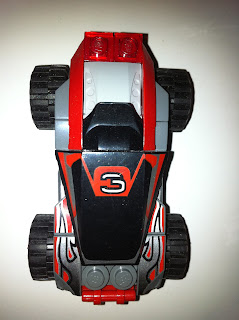Story
"Vroooooom! ", Rat was just overtaken by 'Speedy' who's driving the red lego race car. Both Speedy and Rat are vying for the top prize and to be crowned the 'Champion Racer' by 'Cody', the toddler in the house and also the master of all the toys. Being crowned Champion Racer by Cody was the most prestigious title of all the titles that Cody has ever given, as Cody love playing with his toy cars very much. Both Rat and Speedy are not going easy on each other in order to attain the title. As Speedy zoomed past Rat, Rat slammed even harder down on the accelerator, as he did not want to miss his one and only chance in attaining the title of Champion Racer and not forgetting the top prize, which was a brand new metal chromed remote controlled car that Cody just bought. Speedy filled with confidence, never once looking back, did a mini drift at the last bend with Rat following close behind. Both Rat and Speedy are now head to head, driving at full speed down the final stretch of the Cheesy Cheese Circuit (CCC), and towards the finishing line. Who will be the Champion Racer? Stay tuned :)
Shapes
My lego toy car model consists of a lot of unique shapes, such as the flag, the engine and the wheels. I say that the shapes of the objects are unique because I will require special tools and techniques to model them in Maya.
For example: The flag I will be using the non-linear bend tool, which we learnt how to use in the race track exercise. In addition, the shapes are unique because it is very difficult to model them out of a single polygon. Many different polygons of different shapes and sizes will be needed to be grouped together in order to form a single component or lego piece of the toy car ( for example: the wheel).
This lego toy car that I will be using for Project 1 was specially constructed by myself with all the concepts and techniques that I have learnt from the past exercises in mind. I wanted to incorporate every tool that I have learnt to construct my model for Project 1. For example: the non-linear bend tool learnt in the race track exercise as mentioned earlier, the boolean > difference tool learnt in the toy blocks exercise, and maybe the revolve and EP curve tool learnt in the bucket exercise. I can use the non-linear bend tool, revolve and EP curve tool for the flags on my toy car and the boolean > difference tool for the holes in the wheels of my toy car.
In conclusion, each lego block used in this red lego toy car of mine was handpicked from my mini collection of lego blocks. This is because, I want to give myself a challenge and try to make use of all the tools that I have learnt in Maya to construct my model for Project 1. Therefore, this toy car has quite a high level of significance and not just any lego toy car that can be bought or found in toy stores.
Design
Back view
Front view
Side view
Top view
Bottom view








































